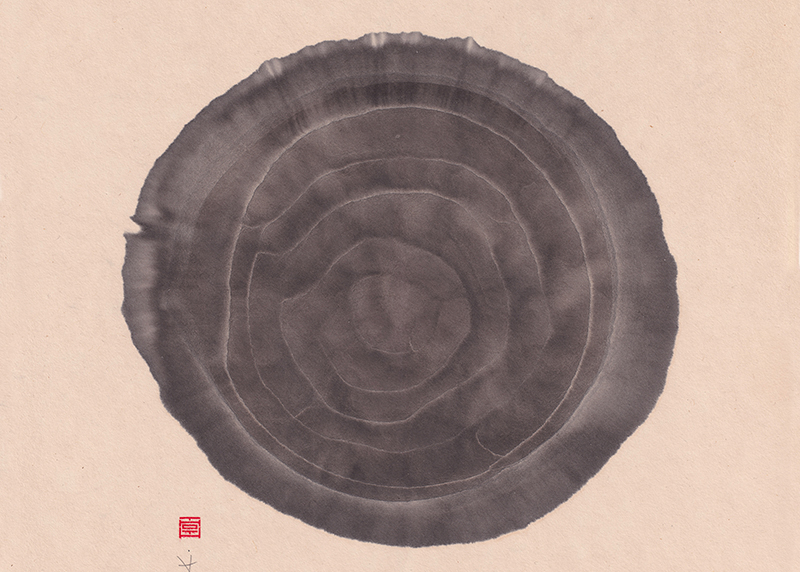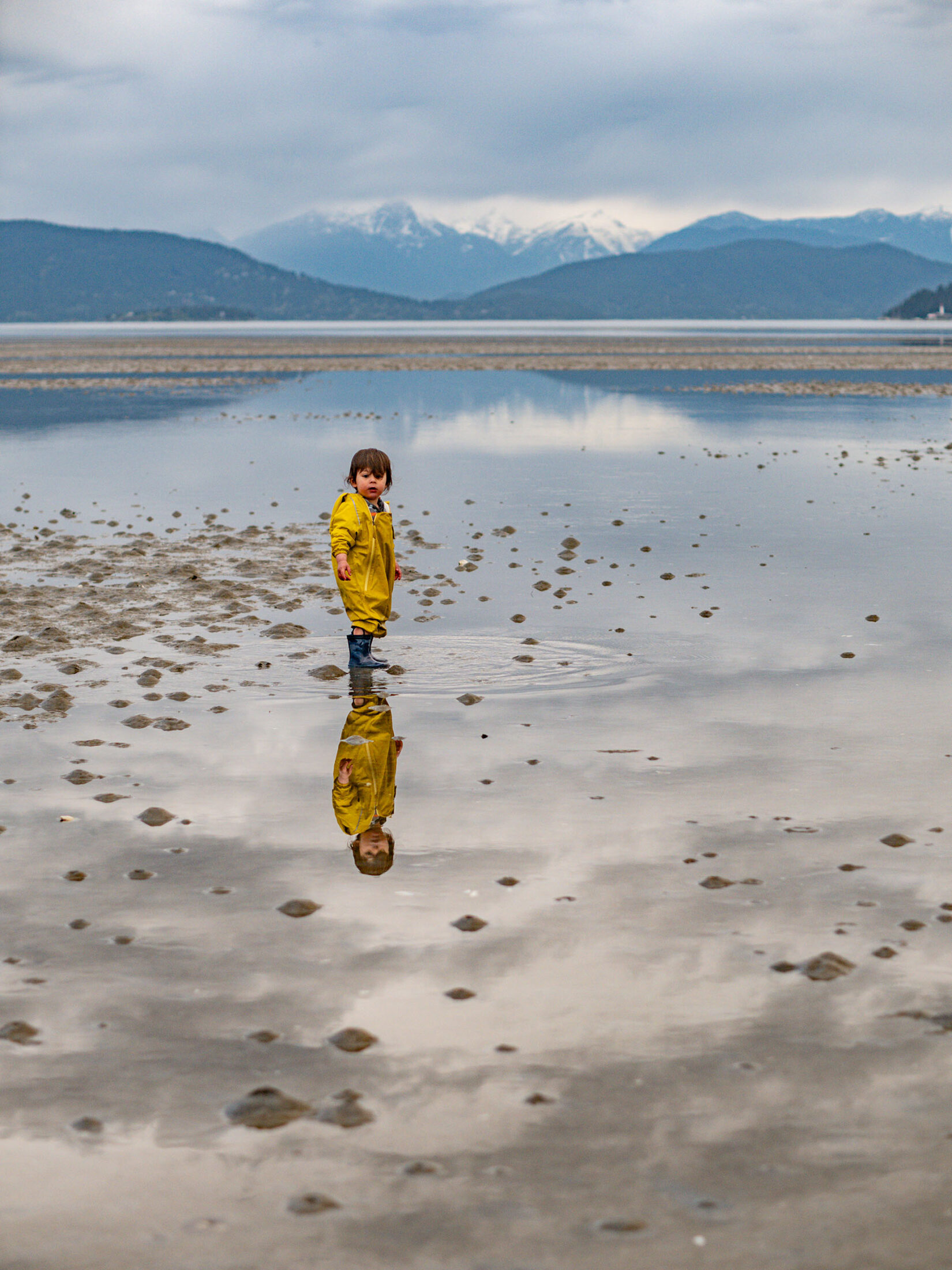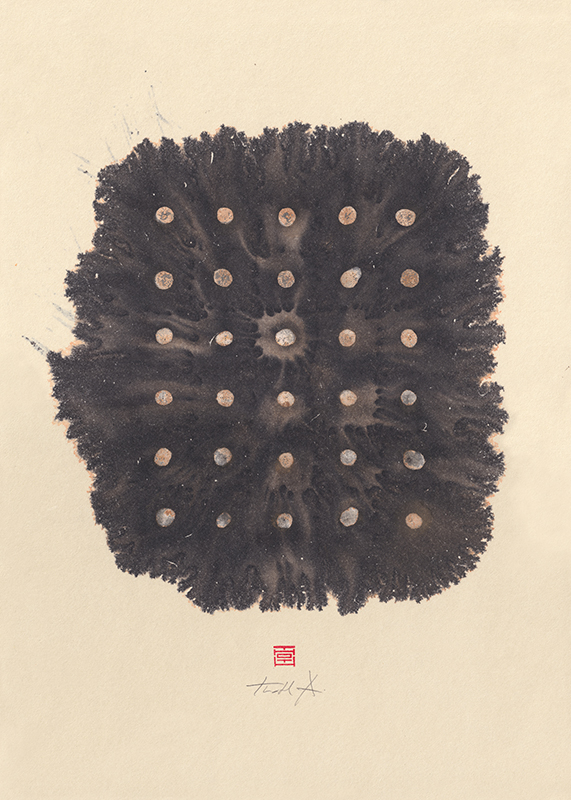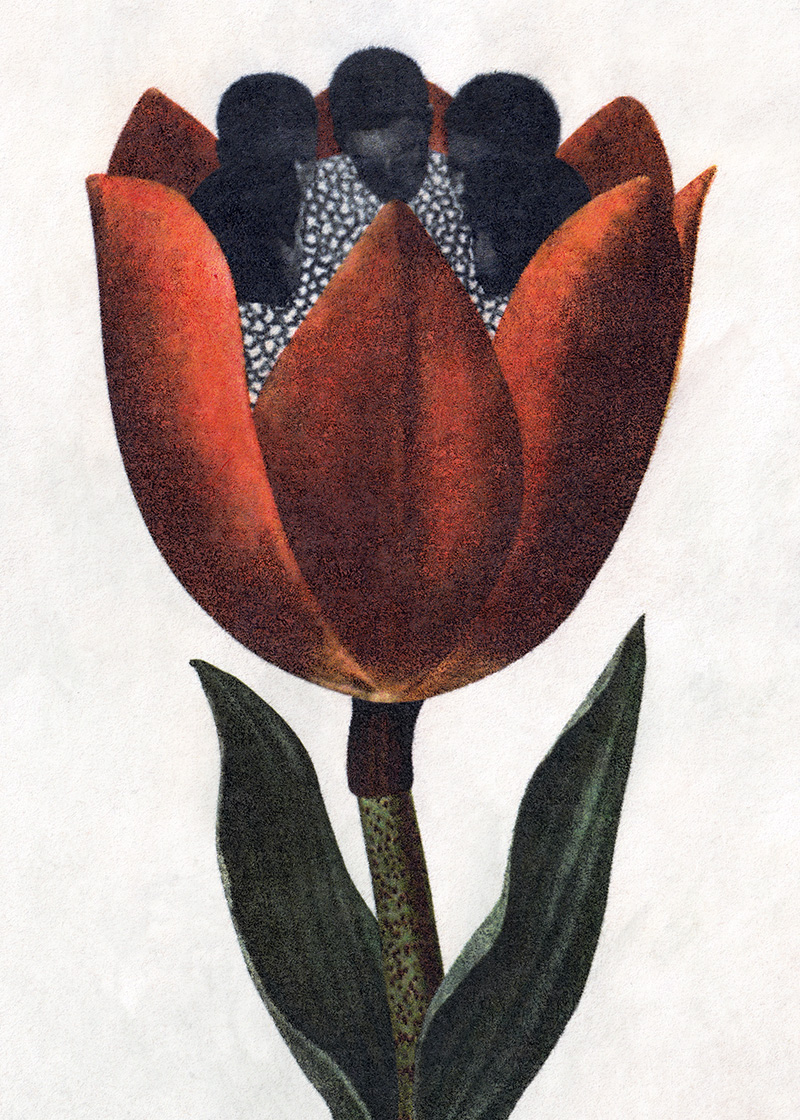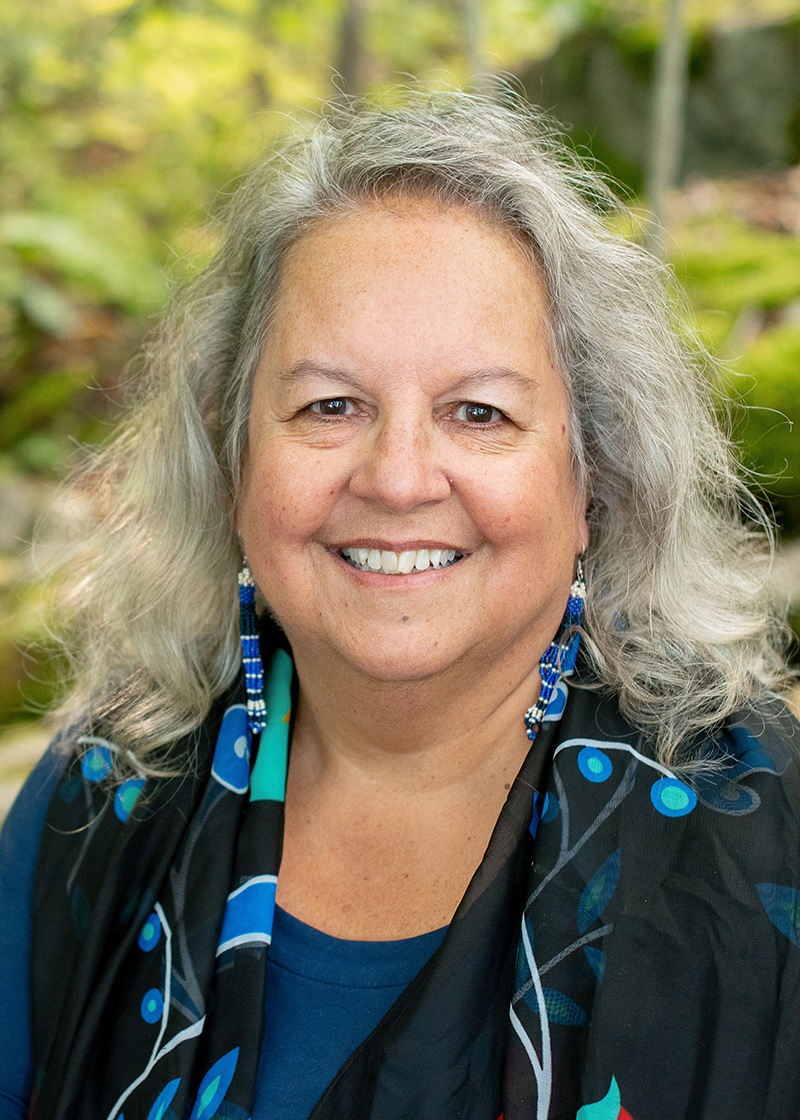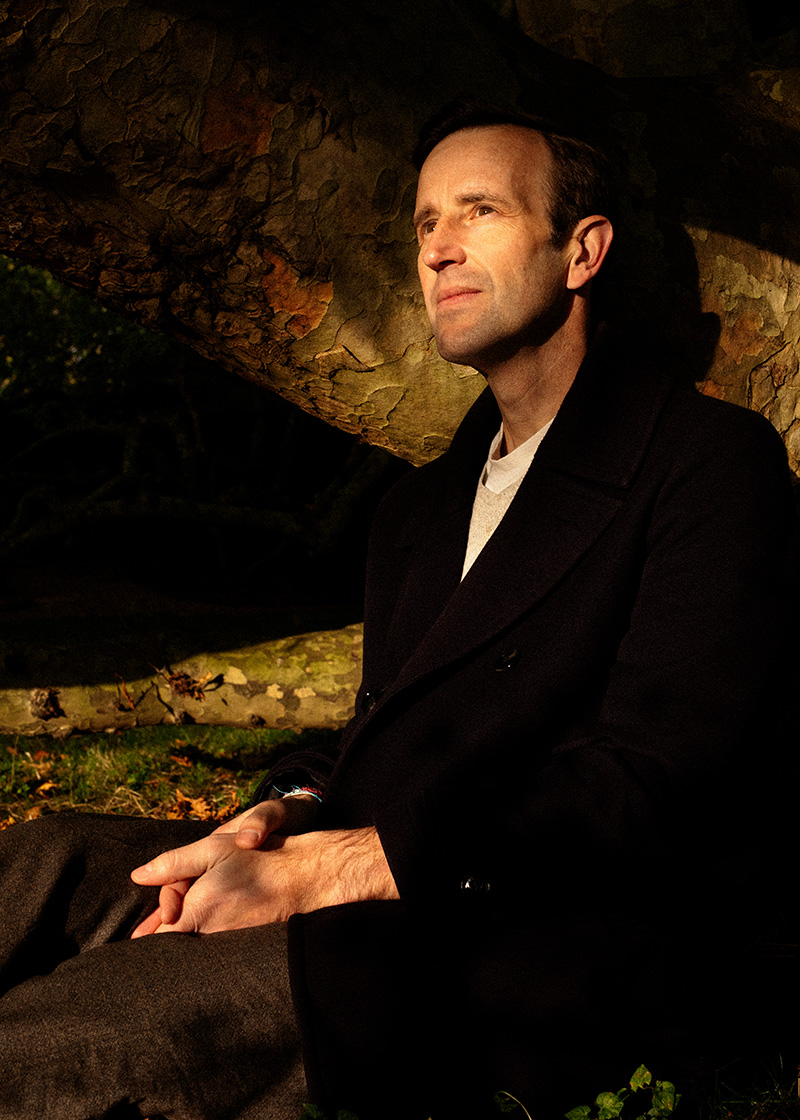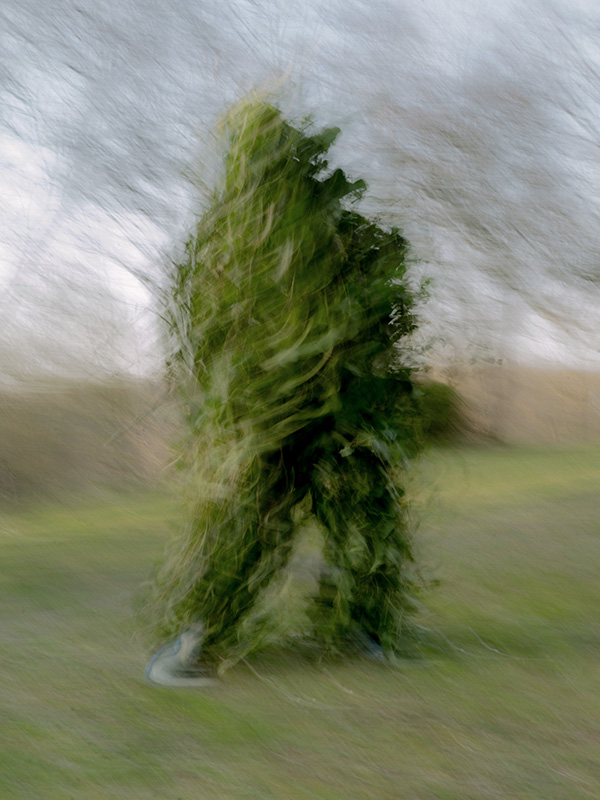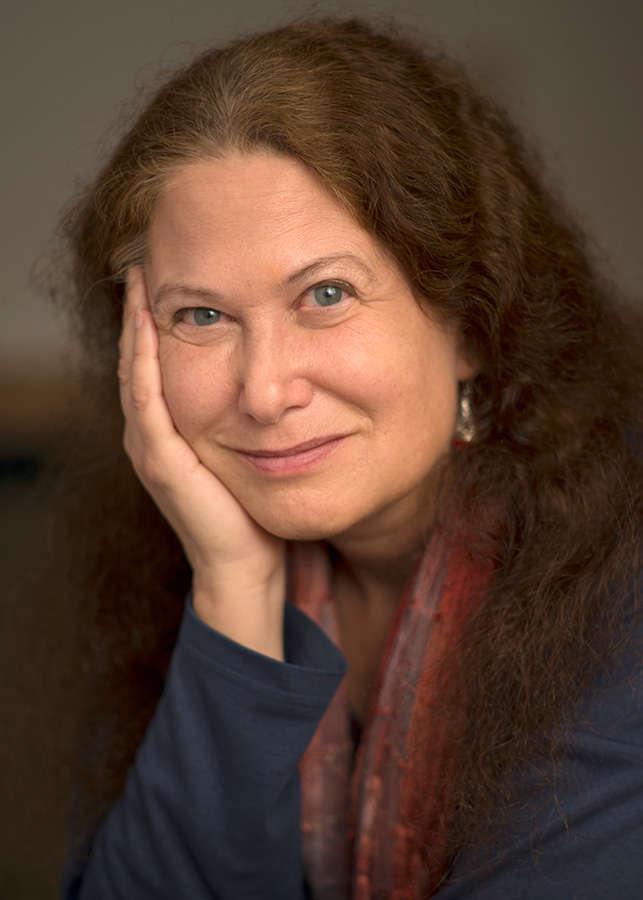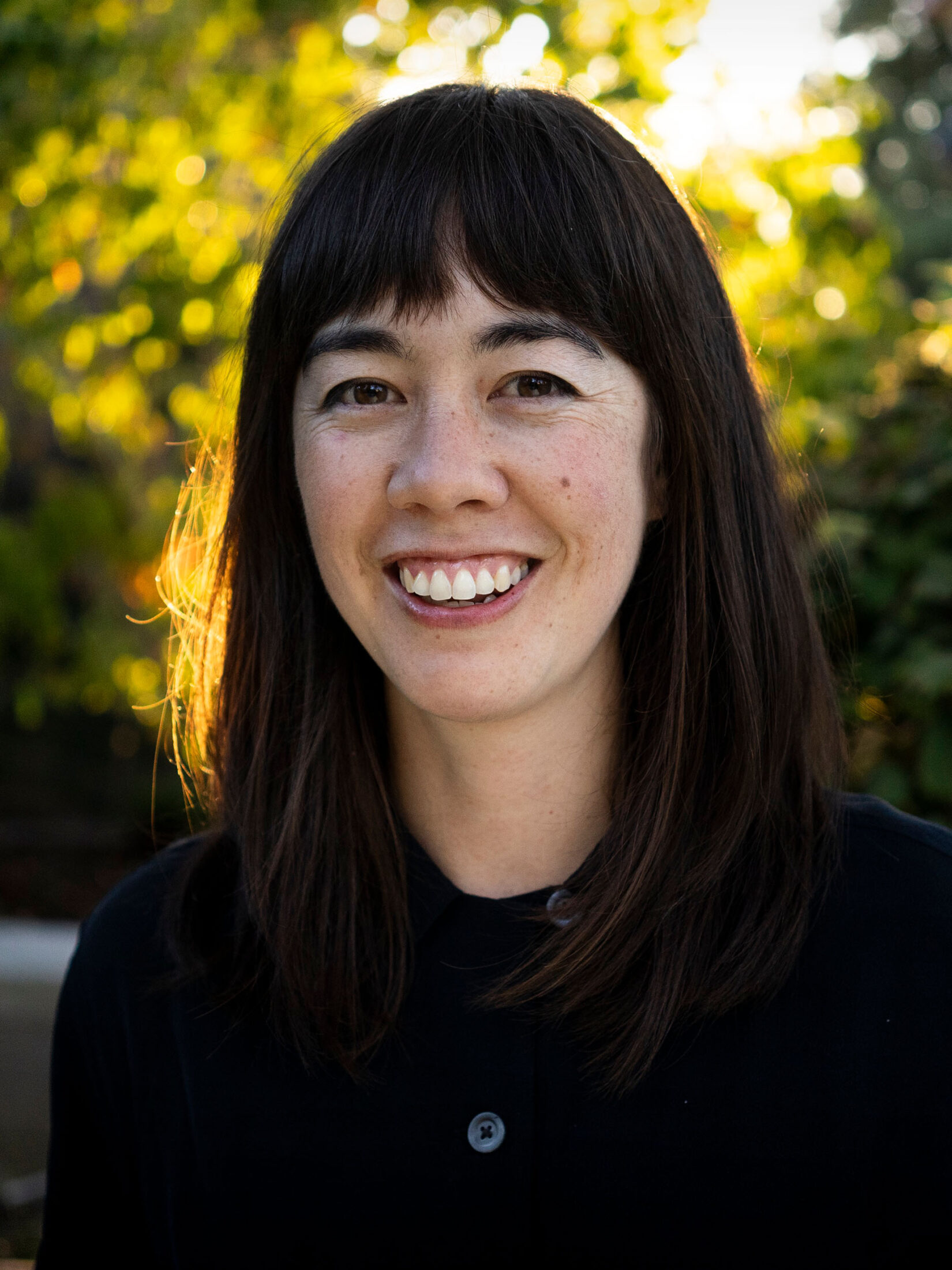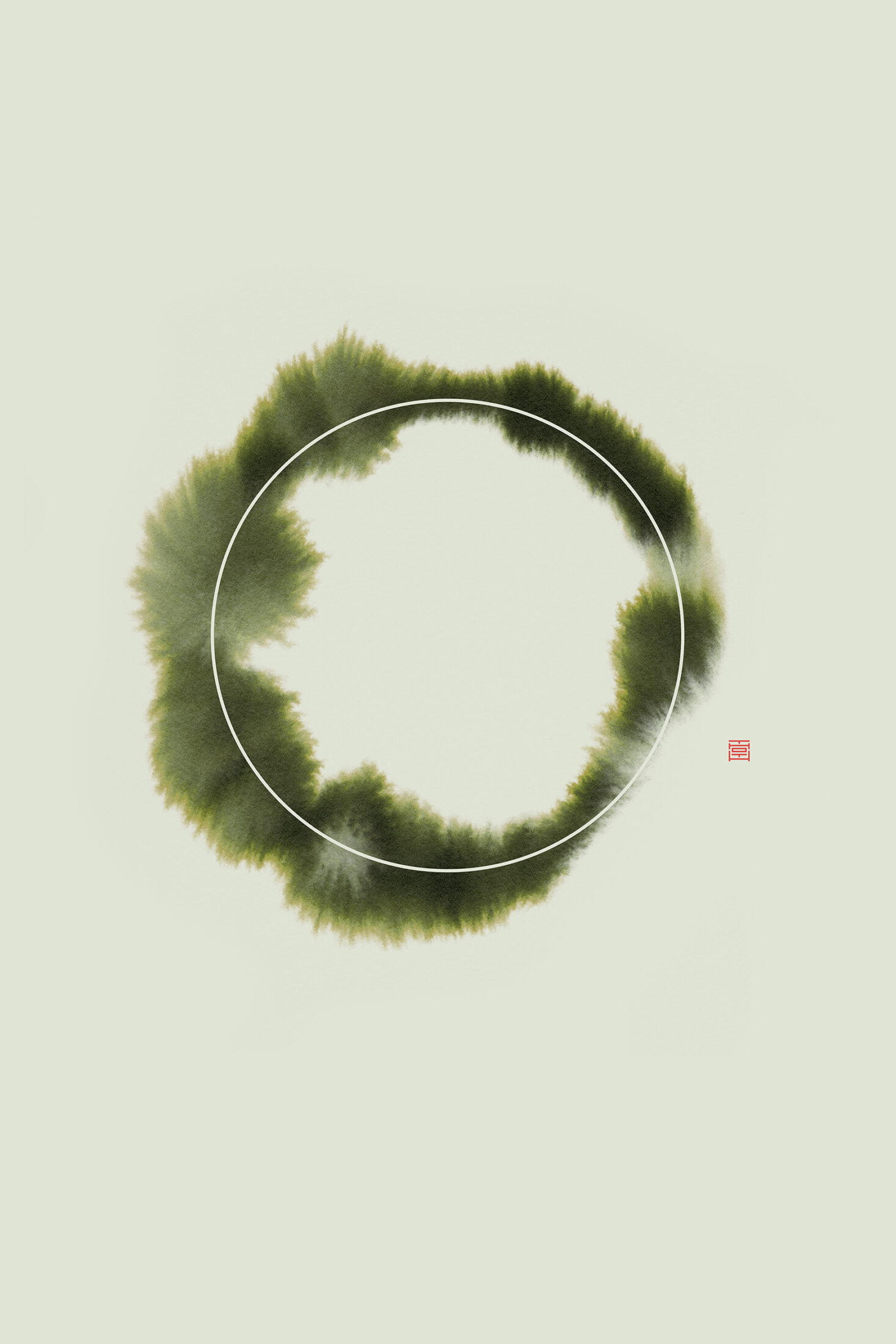
Artwork by Thoth Adan
Unfurling the Spiral
Emmanuel Vaughan-Lee is an author, Emmy- and Peabody Award–nominated filmmaker, and a Sufi teacher. He has directed more than twenty documentary films, including Taste of the Land, The Last Ice Age, Aloha Āina, The Nightingale’s Song, Earthrise, Sanctuaries of Silence, and Elemental, among others. His films have been screened at New York Film Festival, Tribeca Film Festival, SXSW, and Hot Docs, exhibited at the Smithsonian Museum and London’s Barbican, and featured on PBS POV, National Geographic, The New Yorker, and The New York Times Op-Docs. His first book, Remembering Earth: A Spiritual Ecology, is forthcoming from Shambhala in summer 2026. He is the founder, podcast host, and executive editor of Emergence Magazine.
Thoth Adan is a Swiss-born, Austrian-based artist who primarily works with sumi ink and mineral pigments on Japanese washi paper and wood panels. His paintings, abstract, minimal, and gestural, draw inspiration from Eastern philosophies and aesthetics as well as Western art movements such as Abstract Expressionism and Post-Minimalism, merging precision with introspection.
In the first talk of a three-part series from our Song of the Seasons retreat on Whidbey Island, Emergence executive editor and Sufi teacher Emmanuel Vaughan-Lee explores the cyclical nature of the seasons and how they mirror the sacred nature of existence. When we devote our attention to these cycles over time, their continuous variation reveals itself, unfurling like a spiral that draws us deeper into kinship with the Earth. If we find the courage to remember ourselves not as impervious to the rhythms of the seasons, but as profoundly connected to them, we can begin to open to their sacred invitation.
Transcript
So, welcome friends. It is lovely to be here with you this evening. I’ve had the chance to meet a few of you, but only a few. And for those I haven’t yet met, my name is Emmanuel, and it’s a real pleasure to have you journey from all corners of this country so that we can gather here for the next few days to be with the song of the seasons, which are constantly beckoning to us if we are willing to engage with the invitation that is always there.
But in order to speak about the seasons I feel I must first speak about cycles, because to me each season, and each season within each season, is a cycle. It is a circle in constant movement spinning in constant variation: from the spinning of the Earth each day to our circumambulation around the sun, to the unfolding of spring, into summer, into autumn, into winter. Each one is a cycle, is a circle spinning. And within each one of those cycles are numerous cycles, because everything that unfolds, unfolds as a cycle. Not as a straight line, but as a cycle, as a circle, as a spinning movement in constant variation. And I say constant variation because nothing repeats itself exactly. The spinning of each day is different each time She turns; each circumambulation around the sun is a different year that unfolds; each cycle of spring, of summer, of autumn, of winter. And the seasons that exist within the liminal space between those seasons never repeat themselves exactly. It’s constantly in variation because a cycle repeats itself anew each time.
And for me, the seasons at their core are an expression of the cyclical nature of reality as it unfolds. And as the cyclical nature of reality unfolds, it unfurls. And it unfurls as a spiral. Because if a circle spins in constant variation—be that the cycle of a day, the cycle of a year, the cycle of a season, the cycle of a snowfall, the cycle of a rainstorm—it never repeats itself. It is always in constant variation. And when something is in constant variation, there are discrepancies, and the circular nature of that expression unfolds like a spiral. You could say it is the spiritual nature of the circular reality of existence.
And that may sound abstract, but it is grounded in the basic ways that we interface with place through the nature of the seasons. For what spring is the same? What summer is the same? What autumn is the same? What winter is the same? What season within those seasons? Because each season is made up of so many seasons. It is not a uniform expression. It is a daily experience. The cycle of a blossom, the cycle of the growth of grass, the cycle of leaves as they fall, the cycle of water as it freezes. All these forms of the seasons, they are unique expressions and they never repeat themselves. There is always slight variation, and each one of those variations is an invitation to be attentive, to notice, to engage. Because each one of those expressions, that is a variation, is a song. Because the seasons are singing, and they’re singing as cycles, cycles in constant variation that unfurl like a spiral. Because when they unfurl, they are calling out to be engaged, to be recognized—if we are attentive to them. If we are attentive to the variation in the ways that the cycle unfurls in the seasons, then we see them for what they are: alive, constantly changing forms that unfurl as a circle, as a cycle within a cycle, within a cycle, within a cycle. Which is why the most ancient universal symbol of creation was a spiral, because there was a recognition and understanding of this form, how it unfolds in creation, how it unfurls in the stars. And each time we are able to perceive it, we perceive it in a way that it gravitates towards us and we gravitate towards it.
The unfurling of the spiral is a calling, and our attention and awareness of the variation of that spiral is a response. But again, this is not an abstract notion, because this unfurls, this unfolds in relation to how the seasons manifest, which is in relation to place. The seasons are not abstract. The seasons unfold in relationship to place. Each place, be it this place or your homeplace, experiences the seasons differently. It experiences the cycle as it unfurls differently, be that a whole year, a single day, spring, summer, autumn, winter, and the seasons in between those. It is always unfolding differently in relationship to place. It is not uniform: it is unique.
Each place, each cycle has its own fingerprint, but instead of recognizing this universal truth, we have distanced ourselves from that cyclical nature of reality. And the seasons have become uniform, they have become homogenous: spring, summer, autumn, winter. And for much of the world it is not even like that, because there are other seasons: the seasons of the monsoon, the seasons of dry, the season of an endless summer and an endless winter. There are so many ways in which the seasons make themselves known to us. And we mostly ignore that.
We have become distanced from the unfurling of the spiral and the cyclical nature of the seasons. We have flattened them. It is as if we are in a fast-moving train, observing the broad changes that unfold over the course of a year—the changing colors of leaves, the greenery of hills, the coming of snowfall—and we call those the seasons. And we look at them from the comfort of our warm interior train cars through the windows, and the seasons are over there—not as a constantly evolving variation of a cycle that is unfurling towards us, expressing itself differently each day, each year, each moment. Instead, it has become static. And this distance is part of a much deeper story of distancing ourselves from the place that holds all seasons, from the living, breathing Earth. We have severed ourselves from Her. To me, this is the great crisis of our moment that lies at the root of the ecological catastrophe and the social catastrophe and the economic catastrophes and the political catastrophes and the human catastrophes. At their root is an ancient story of separation from the living, breathing Earth.
Because it wasn’t always so that we were distanced from the cycles of the seasons, from the cycle of a day, from the circumambulation around the sun. It wasn’t always so that we thought it was uniform. It wasn’t always so that we only thought of four seasons. It wasn’t always so that we were not, in the moment, able to be attentive to the variation of each cycle as it unfolded, allowing that unfurling of the spiral to pull us towards the living, breathing Earth, in the same way that a screw enters wood and pulls to create cohesion. Because how do you think we created a relationship to place for time immemorial? It was through the attention of being in relationship to place, and how that played out through the way that the living, breathing Earth expresses Herself through the manifestation of the seasons, and our relationship to them in all ways: in the way that we grew food, the way we gathered food, the way we hunted food, or made shelter, or looked up at the stars, and gazed at the moon. Because there are many cycles that exist within the cycles of the seasons, like the cycle of the moon and the cycle of the stars. And we understood these relationships, because they were the most foundational forms of the ways we lived our lives. Not distanced, but in constant relationship, constant attunement, constant attentiveness to the variation of how a season expresses itself in form in the circular nature of existence.
Each day, each year, we observed this, we participated in this. And this was not just something that we experienced through the course of our own lives. It was embedded in ancestral memory, the ancestral memory that understood the cyclical nature of existence and how the seasons were the way that the living Earth expressed Herself in myriad diverse forms that never repeated in the same way. Because every real relationship, be it a human or a more-than-human one, is one that is alive, not repeating itself exactly the same way. In the same way that each breath that you exhale and inhale is never done in the same way, every exchange you have with a partner is not done in the same way. It is not dead; it is alive, and it is constantly moving, constantly in a state of relationship. But again, we have denied this reality, because we have made the seasons—like everything else in this living, breathing, Earth—inanimate, static, dead, to be controlled, so that we can be the master of the seasons versus a participant in a relationship with the seasons. So that we can control temperature, food, sunlight, starlight, snowfall, rainfall. We exist outside of them. They are not part of the fabric of who we are anymore. And to me, this is part of the story of the great forgetting of the real nature of who we are as human beings in relationship to this living, breathing Earth.
Because we are in relationship with this living, breathing Earth. She is alive. We are alive. Everything in existence on this living, breathing Earth is alive, moving in a circle as a cycle that is in constant variation. This is the story of how it was. And it is not such an ancient story. It wasn’t that long ago that we held inside of us, that memory. It wasn’t that long ago that we were born where the bones of our ancestors were buried. It wasn’t that long ago that that embodied knowledge was part of us. And for some of us it still is. Because each one of us is different, not uniform. Some of us have relationship to place, some of us inherited relationship to place, some of us hold the memory of relationship to place—and within that, the seasons and the understanding of the cyclical nature that the seasons unfold within, and the variation within that.
But by and large, our collective culture, which is dominated by a Western rational consciousness that puts the human at the top of the pyramid and everything else beneath it, has denied what is our right—our inherited memory as human beings that we hold inside of us. That seed, that seed that is a memory, that is a cycle in its own right, that holds within it an understanding of what it means to be in relationship to place, of what the seasons really are as a medium of exchange. They are a cycle of birth and growth and life and decay and death that has informed our understanding of every single cycle in the history of our evolution on this planet. We witnessed, we observed, we participated. That understanding became ingrained in our story. It really is our story. And yet we deny. We deny.
So if we are to engage again with the seasons as they really are—not as four uniform expressions, a homogenous reality, but rather an alive cycle that is constantly moving, expressing itself differently in relationship to each place that we inhabit, we pass through, that is our home—then we must do so from the place within us that remembers what it was like to be in relationship to place, not as a philosophical concept or an intellectual exercise, but an embodied experience. Because it is embodied, just as the seasons are embodied. They unfold in this physical medium. It is not a spiritual abstraction, just like the cycle is not a spiritual abstraction. The Earth spins each day, it circumambulates the sun each year, the seasons unfold. They are not abstract. So we cannot relate to them as if they are abstract. We must relate to them from an embodied place inside of our own beings. And this is not something we need to learn, but rather this is something we need to remember; because we hold inside of ourselves that memory of how it once was.
For some it is buried deeper than for others, but it is there within each of us, because it is part of who we are as human beings. The majority of our experience as human beings played out where that memory was alive—not forgotten, alive. And so it can be awoken again. Because the root of the crisis that we are dealing with, of which our relationship to the seasons is just one part, is at its core a crisis of forgetfulness: forgetfulness of the sacred nature of this living, breathing Earth. We forgot that She was alive, and we created a vastly complex series of stories that supported that. And we did it rather quickly, and we did it rather efficiently. But it is a falsehood. It is not our identity. And many of you know this, because this is what, no doubt, drew you here this weekend; because you have already identified the falsehood of the narrative that we have imposed on the living, breathing Earth, and upon the seasons, and upon the nature of this living, breathing Earth. And you have already felt this memory, no doubt, inside of yourselves. Because this memory, it wants to make itself known, and it responds to the living, breathing Earth in a myriad set of ways. Be that the grandeur of beauty as it unfolds within the construct of the seasons, or the cry of the Earth as She lets out the pain of what we have done to Her because we have distanced ourselves from Her.
This depth inside of our being that holds the memory of who we really are in relationship to this Earth, it can come alive when our soul sings, when we see this Earth for who She is, and when our soul experiences what She experiences, even if it is just a fleeting moment of pain and despair, a total lack of comprehension that this could actually be unfolding, that there could be such forgetfulness that we can destroy this great mystery and seek to control Her and seek to forget Her and seek to flatten Her and distance Her. But this memory inside of us, when we have the courage—because I think it does take courage to engage with it, not just fleetingly, not just for a moment or a day or a season, but constantly—then we can return to the space where we can recognize the unfurling of that spiral and the variation of existence as it allows itself to be seen in the myriad forms of the seasons.
Because it was over time that the spiral unfurled, it was over time that we became connected to place through our observation and attunement and attentiveness of the variation of how the season expresses itself. It was over time that that bond was made. And so it’ll be over time that that bond is remade. But it cannot be remade as a concept. It has to be remade from something foundational.
And so the first step is to either open that space inside of ourselves where that memory exists. And if that memory is already open, then we must nurture it. We must be attentive to it so that it grows. So it does not close up again. Because we have become a culture of forgetfulness and even our intentions can so easily go awry, be covered over because the world is noisy and busy and it’s too oriented towards this line of progress. It sucks us in, pulls us away from being attentive to this simple universal truth: that we are always moving in a cycle, in a circle, spinning in constant variation.
And even if we do not live in the same place in the ways that our ancestors did, because most of us don’t anymore, we can establish a relationship with place through our attentiveness, because we can be present in that place, because we are attentive to the cycles. Because even when we come to a place for the first time—like many of you are here in this room on this land, surrounded by the cedars and the ferns and the bird song that is unique to this place—we can be in relationship to this place if we are attentive to the cycles that exist within it. We can be attentive to the seasons if we are attentive to the cycles within the seasons, if we allow ourselves to be present. Because when we are embodied and present with these cycles, we cannot be caught within the constructs of our minds, because it is our minds that mostly removed us from this embodied relationship with the seasons and the cycles.
Now, if you stay in one place over time, each day attentive, attentive, attentive, attentive, naturally you will re-unfurl that spiral. Those roots will return. That memory comes alive. You don’t think about it; it just happens, but it takes time. But if you are attentive and utilize certain basic ways of being, then there is the potential to allow those roots to regrow so that we can again experience that cyclical nature of the seasons as they unfold. Not thinking, but being. It asks of us to be in a state of presence. Because if we are truly to be participants in this exchange, not observers, then we have to be in a state of presence. Not thinking about autumn when one is in spring, but present in that moment, hearing the bird song like we do outside right now, attentive to that song, attentive to each day as it spins, attentive to the cycles within that day and the season as it exists within that day. And it requires attentiveness and re-attuning ourselves to something that already exists within us.
Again, it is not new. It is not something we have to learn. It is rather something we have to remember. And I have no doubt that each one of you have had this experience already in some shape or form, where the mind slowed, or even stopped, and you were able to be, even if it was just for a second, just for a moment, in a space of real relationship and presence with the place that you stand on in that moment. Again, feeling that cycle come alive in you, attuning to the cycle that exists in that moment, experiencing the unfurling of the spiral as it calls out to you and you call out to it, meeting.
And if we can build on those moments so they’re not moments but part of what our lives are about, then we can return to a space where we can hear the song of the seasons as they really are. Not only in the bright moments of celebration, which of course are worthy of our attention, but in the constant unfolding of each moment of each day, present to the seasons, present to the cycles, present to the living, breathing Earth. Because within this memory, within this seed that lies within us that we seek to awaken, there is something beyond purely the physical. Because the story of forgetfulness that has distanced us, that has put us to sleep, it is a spiritual story, because it is about the denial of the spiritual nature of this living, breathing Earth. Not just that She is not alive, but that She is not imbued with spirit. And so the spiritual story here is about, again, returning to the awareness that there is a spiritual thread that runs through this cycle, that runs through each season, that runs through each year, that we can constantly engage with in a state of presence, so that the spirit within us that comes alive can recognize the spirit that exists all around us.
Because to me, a spiritual ecology is a recognition of the spirit that exists within all things: within each being, within each cycle, within each form, there is spirit. The recognition of this and then the response, and the response with our attention, with our attunement to the seasons, to place, to where we are in each moment. It is a spiritual response. And when the mind is not overbearing, that spirit is allowed to flow so that those threads of remembrance, of spirit, can again be woven like the spiral. Because the spiral, when it unfurls, weaves its way into you. But the spirit can be woven between us and place, between us and season, between us and cycle, so that the webs of forgetfulness can be cleaned, wiped clean with the spirit threads of our remembrance.
And it starts with the recognition of the cycle. It starts with the recognition of the circle as it unfurls. It starts with the recognition that the most basic human act that we do each moment is a cycle, is a breath. But just like every other cycle is constantly in motion, constantly in variation, constantly in exchange. Because it is that simple. To return to this foundational way of being, to return to a space where we can see the seasons for what they are so that we can participate in this cycle of mutual exchange where spirit meets matter and spirit meets spirit. And it can begin with the simple way that we recognize the cycle of our own breath, the cycle of our own heartbeat, the cycle of our own step. These simple, simple ways that we breathe, we move, the blood pumps through our bodies; and then we slow, we settle, and we can be present, and that distance can go.
And over these next few days together, I want to share very simple ways that we can again attune ourselves to these cycles, attune ourselves to the seasons, attune ourselves to place, attune ourselves to this living, breathing Earth. Not as an abstract concept, not as an intellectual or philosophical exercise, but as an embodied experience, through slowing ourselves, through using our attentiveness, so that our senses can again be attuned to those cycles, can again be attuned to the spirit that flows through all things, to again be attuned to Her, so that when we hear the birds at dusk, as we do in this moment, we let their song penetrate our being. Because why would we not want that? Because that song is of this place, and that song is of this season. And that song wants us to hear it. But not just to hear it: to hear it with the inner senses as much as the outer, with the ear of the heart, so that that bird song becomes part of us and links us to this moment, to this cycle, to this place.
